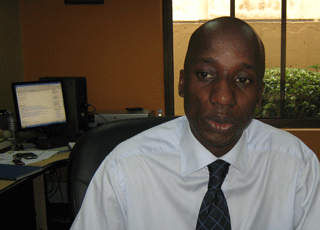
By Patrick Kagenda
MultiChoice Uganda General Manager Charles Hamya tells The Independent’s Patrick Kagenda why the Ugandan housing set-up and bench-marking the best internationally favours satellite against cable TV locally.
How do you intend to use the fiber optic cable to ease access of your services to the Ugandans?
The fiber optic cable is a good development for the ICT sector in the region and particularly for the telecommunications companies. Potentially it gives a lot of capacity to move data and also brings down the cost of bandwidth significantly. From a pay TV point of view and in the short to medium term, we do not see the undersea cable greatly impacting. What the consumers are interested in is costs coming down. That is not likely to be happening in the next five to ten years because we benchmark ourselves against the best in the world.
If you go to Europe and America, pay TV services are delivered by Satellite and contrary to conventional beliefs satellites are cheaper than cable from a circuit point-to-point basis. The issue we are talking about here is a last mile. How do I deliver television on cable? This means that you need an organised living setting like a Kololo or National Housing type of estate. It calls for digging and laying cable to every household to be able to deliver cable. If you look at the way the Ugandan type of housing setup is, we are far off from realising cable to the homes. Satellite will remain the technology for TV for a long time especially in Africa where the development in infrastructure is still very limited.
In Kenya DStv recently launched a product where mobile phone owners can access it. When do we see such a product come on the Ugandan market?
We have a license in Uganda to provide that service. Our counterparts in Kenya have partnered with Safaricom and have launched the service, however one of the challenges they have been facing is sourcing for affordable handsets. We want to come up with a phone that would be affordable by the common man on the street. Once you go mobile this means you are going mass market and mass market and pricing has a correlation. The lower the price the more the consumers you might potentially be able to attract on the platform. Our sister company Dstv Mobile reached an agreement with Nokia to manufacture a low cost DVDS handset and we hope that at the right time we will be able to provide that service because if we do not do it somebody else is going to do it.
What does the coming of Star TV mean to you at DStv Uganda?
Competition is good for us, it’s good for the Ugandan broadcasting industry and it’s a great innovation and we are hoping that they will come up with a new technology, a new product and services hopefully that will challenge us to provide better services to our customers. Consumers will be able to pick from either Dstv or the new company.
There are complaints that your rates have become too high since the unceremonious exit of GTV that had forced you to cut them. Why are your rates high?
We are providing value for money. If you go back to 1997 when we first launched, we had 25 channels and we were charging $63(Shs132, 300 at the current exchange rate). Now 11 years later we have moved from $63 to $73(Shs 153300 at the current exchange rate) yet we have increased the number of channels from 25 to over 60. We believe in being a responsible business that is profitable and sustainable. Over the years we have introduced several packages. We have a package that goes for $19(Shs 33,900), and another one for $25(Shs 52,500) that has over 35 channels. Three weeks ago we introduced a $10(Shs 21,000) product. So if they can’t for any reason afford the $73 package they have the option to come down to the $25, $19 or the $10 packages. If you look at the global trend, you will find that our pricing is much more competitive than an ordinary consumer would think globally because the channels that are consumed in Uganda are the channels that are consumed in Europe. If you went to the US there are two main operators, Direct TV and Dish Network and their premium package goes for $93(Shs 195,300). We still believe that we are very competitive in Africa regardless of the income level differences.
Is it the impending competition from Star TV that has sent you offering a $10(Shs 21,000) package?
We can’t reduce price because of competition. What we would like to do is run a business that is sustainable and that type of business calls for pricing the product in such a manner that you are able to attract customers and at the same time be able to guarantee a return on your investment.
What is your level of penetration?
If you look at our population of 30 million Ugandans we have sold close to 50,000 decoders. This statistic may not make sense but if you look at the penetration of electricity in Uganda which is about 8%, look at average income for the Ugandans which is less than $300(Shs 630,000) which is less than a $1 (Shs 2100) a day. All those things when put together then the numbers start making sense. That aside the introduction of the $10(Shs 21000) package is because we believe there is a market for good television consumption.
 The Independent Uganda: You get the Truth we Pay the Price
The Independent Uganda: You get the Truth we Pay the Price


